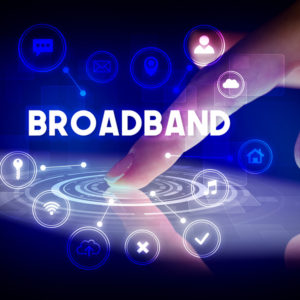The coronavirus crisis is a stark reminder of the grave costs of infrastructure neglect — in this case, neglect of our public health infrastructure.
Decades of hard-earned experience — with SARS in 2002, H1N1 in 2009 and Ebola in 2014 — gave us a roadmap for international and domestic rapid response systems to identify and isolate outbreaks before they could cause catastrophic damage.
The inexplicable dismantling of these systems and the administration’s stunningly asleep-at-the-wheel response are almost criminal in their neglect.
Properly funding pandemic preparedness infrastructure may have cost us a few billion dollars.
Instead, our lack of preparedness has already cost the U.S. economy more than $12 trillion in market value, $2 trillion in taxpayer-funded stimulus and bailouts (and counting), threatened the health of hundreds of millions of Americans, and plunged the world economy into a what could be a global depression.
Playing catch-up to manage this crisis will now require unprecedented personal sacrifice and costs at the federal, state and local levels. And it will require us to lean even more heavily on other infrastructures — namely, broadband networks — as work, education and even healthcare consultations shift to connected online platforms.
In many ways, we are fortunate that our broadband infrastructure — among the world’s most affordable and accessible — doesn’t rely on the vicissitudes of politics and government funding the way our public health system has.
Instead, more than $1.5 trillion in risk-based, private sector investment over the past generation is bringing gigabit-speed networks to more than 80 percent of American households — and that percentage is increasing. The Progressive Policy Institute’s annual Investment Heroes report finds broadband providers as four of the top 10 U.S. capital investors in the U.S. economy.
In Europe, by contrast, where line-sharing and other old-school, heavy-handed government regulations are the norm, speeds and buildout lag; Netflix and YouTube both had to reduce video quality and throttle their streams because European networks can’t handle the increased loads seen during this pandemic.
There is a lesson here. America’s broadband buildout can be traced to stunningly successful bipartisan policymaking in the mid-’90s, when a Democratic White House and a Republican Congress set aside their slings and arrows to pass a landmark telecom bill that protected both consumers and competition, while encouraging massive new private investment in broadband networks.
But our national broadband buildout isn’t finished, and Congress should take a bipartisan cue from 1996 as it tries to fill the remaining gaps. Here are three things Congress can do quickly and easily — and in bipartisan fashion — to help us modernize broadband and ensure our infrastructure is even better prepared for future crises:
First, we need universal access to broadband. Full stop.
While high-speed broadband is available to about 95 percent of the public, we need to close the remaining gaps so that every poor and rural community has world-class connectivity.
This will require some federal support, because it is hard if not impossible to find private investors to underwrite the costs of laying of wires in sparsely populated communities where the closest neighbors live miles apart. We can start now, as a small part of the emergency stimulus packages urgently being negotiated on Capitol Hill.
But in funding this rural broadband expansion, Congress should learn from past mistakes.
Well-intended efforts by the Obama administration to close the rural digital divide wasted too much public money building duplicative networks in communities where networks already existed, and drove off too many of the smartest and best qualified infrastructure providers with unneeded and outdated red-tape.
Congress can get better results this time if it modernizes the rules and creates a fuller and more robust competition that welcomes in the best and brightest.
Second, Congress should pass a bipartisan net-neutrality law — and do so now. The teleconferencing software, distance learning platforms and telehealth applications that we rely on now more than ever all underscore the need for an open and vibrant internet.
Huge majorities of voters in both parties support common-sense rules to prevent broadband providers and big tech platforms from undermining this openness by blocking, throttling, or unfairly prioritizing traffic.
But for too long, Congress has viewed this issue as an opportunity for grandstanding rather than for responsible legislating. Enough already. Sit down together, write these principles into law with no loopholes or unrelated add-ons, and put it up for a vote.
Third, Democratic leadership should shelve the pipe dream of passing a law to reclassify broadband under Depression-era “Title II” utility rules, similar to the approach Europe has taken.
The Washington Post has rightly called this idea “toxic” for any prospect of a bipartisan agreement on net neutrality. Europe’s experiment with this approach has been a dismal failure by nearly every measure.
At some point (soon, it is hoped), this pandemic will abate, and Americans will return en masse to their schools and offices.
But the vital importance of our broadband infrastructure will remain. In order to be even better prepared for future national emergencies, Congress needs to rediscover a willingness to govern across party lines to facilitate broadband infrastructure that will continue to be the envy of the world.

